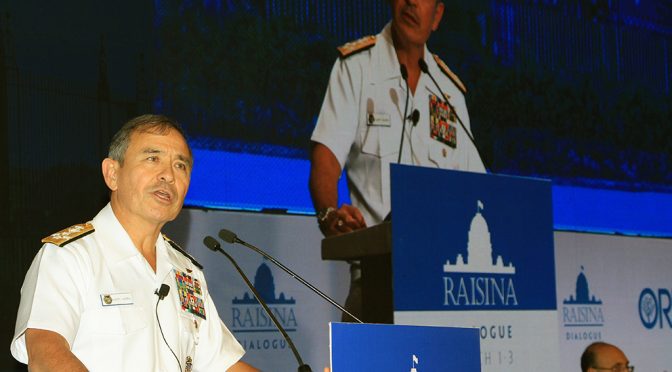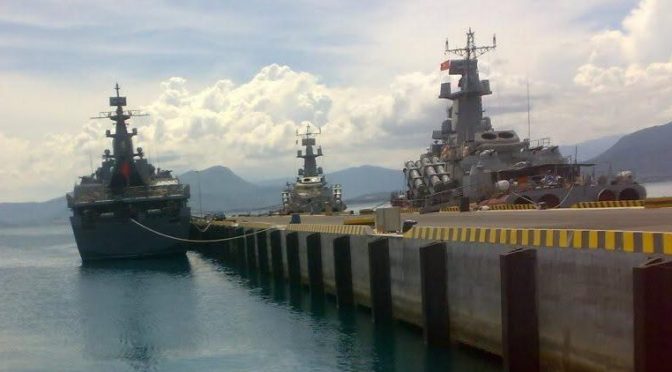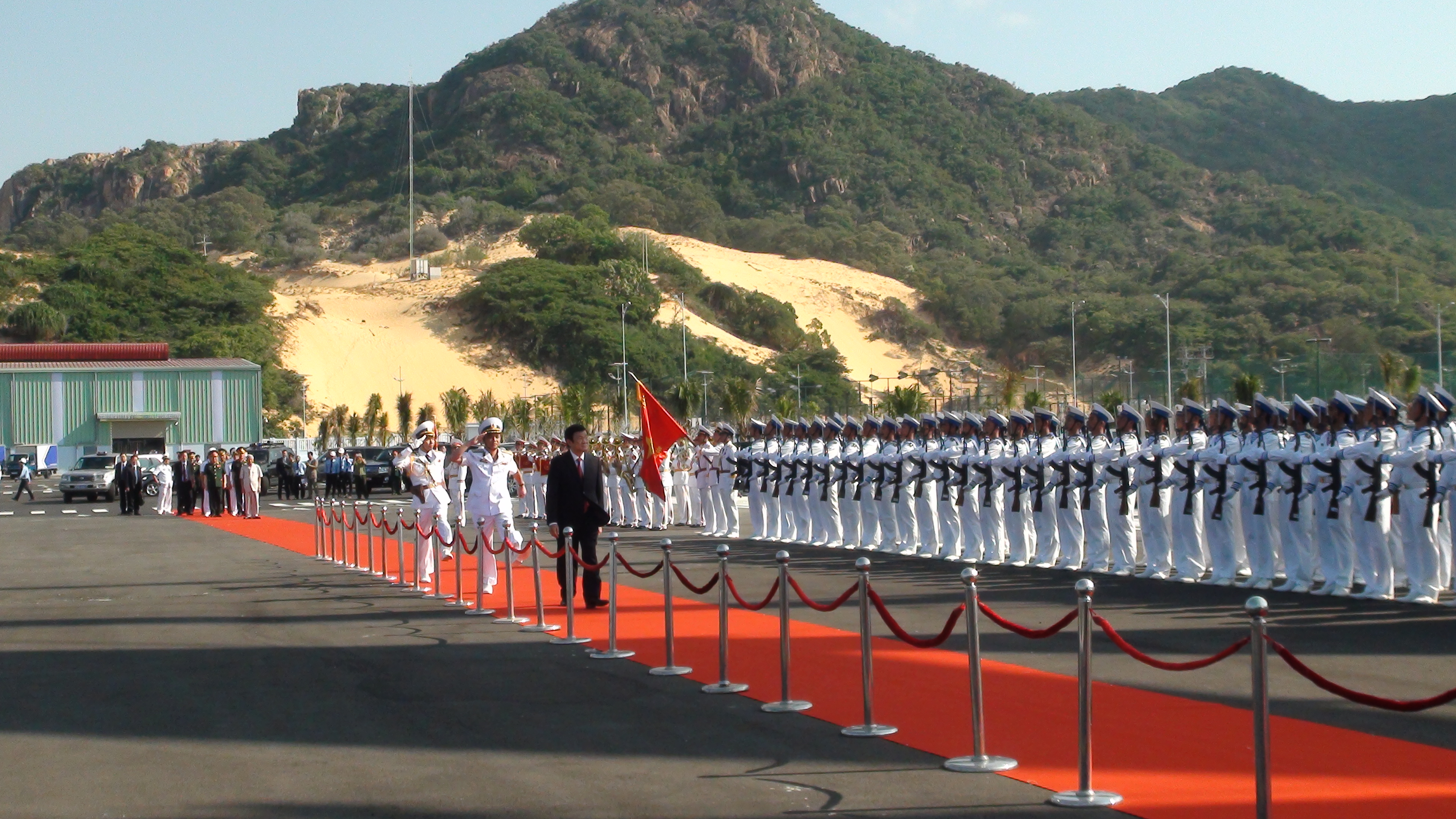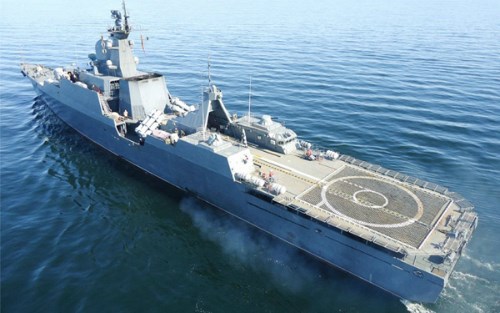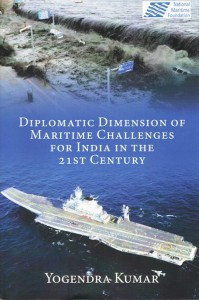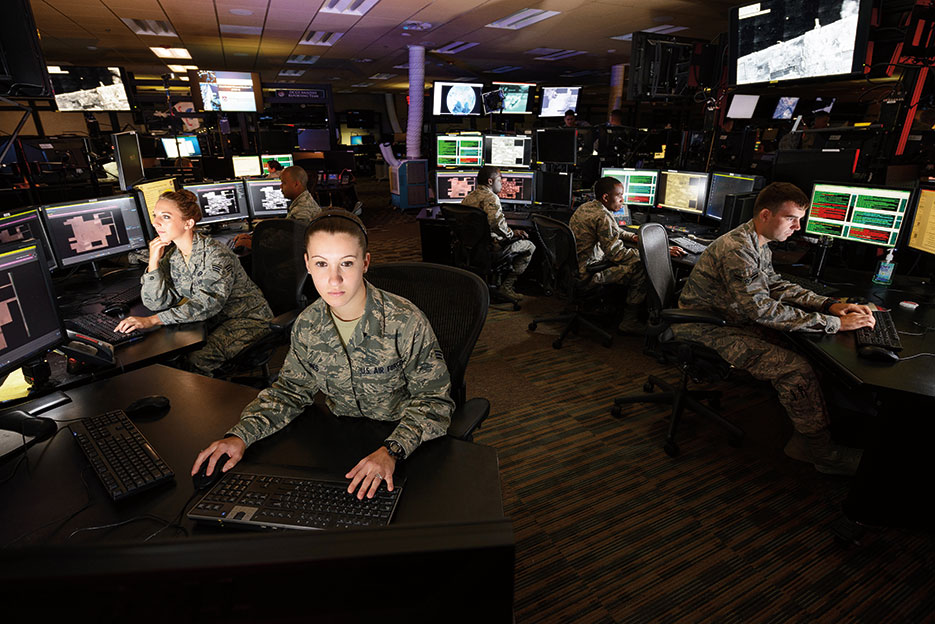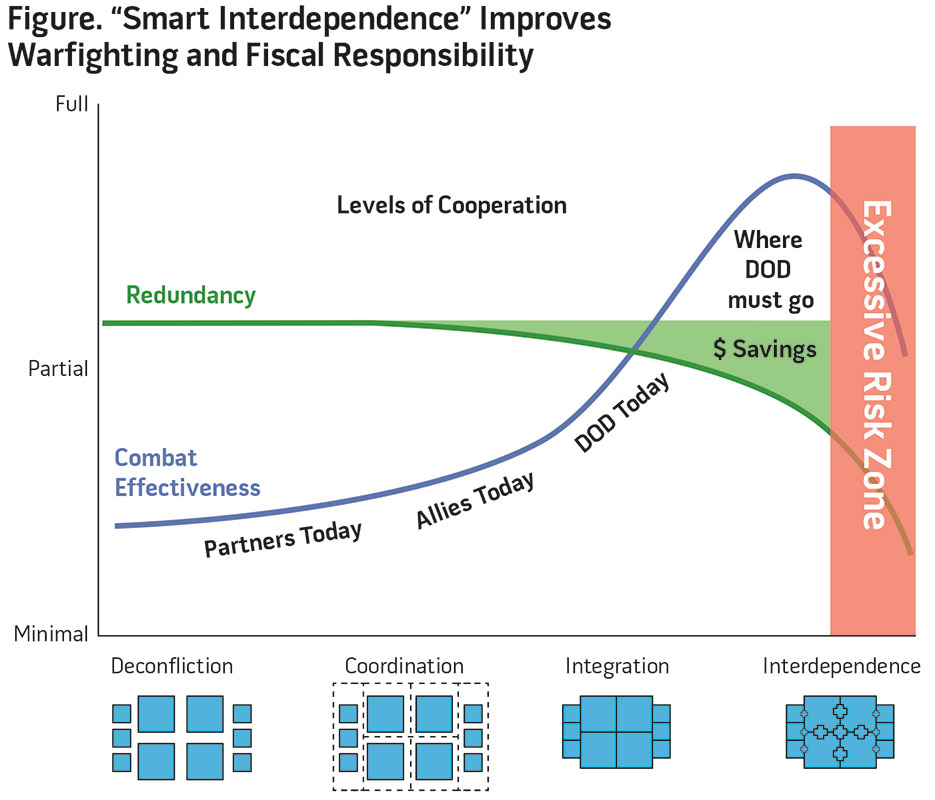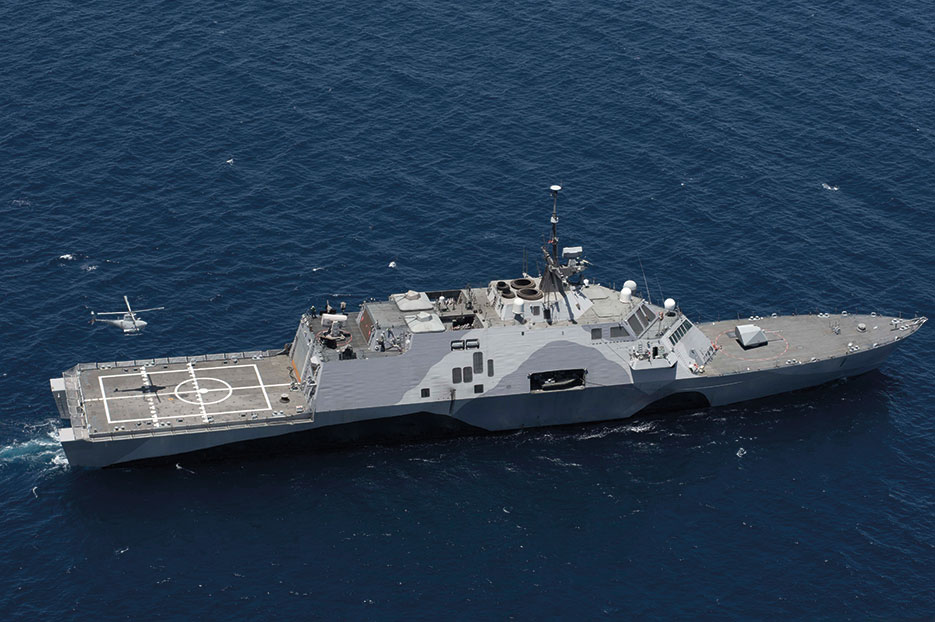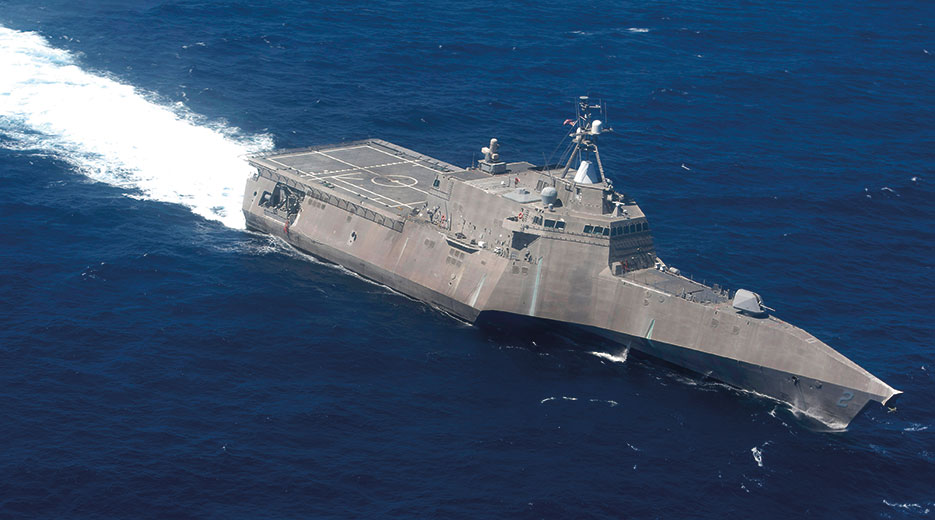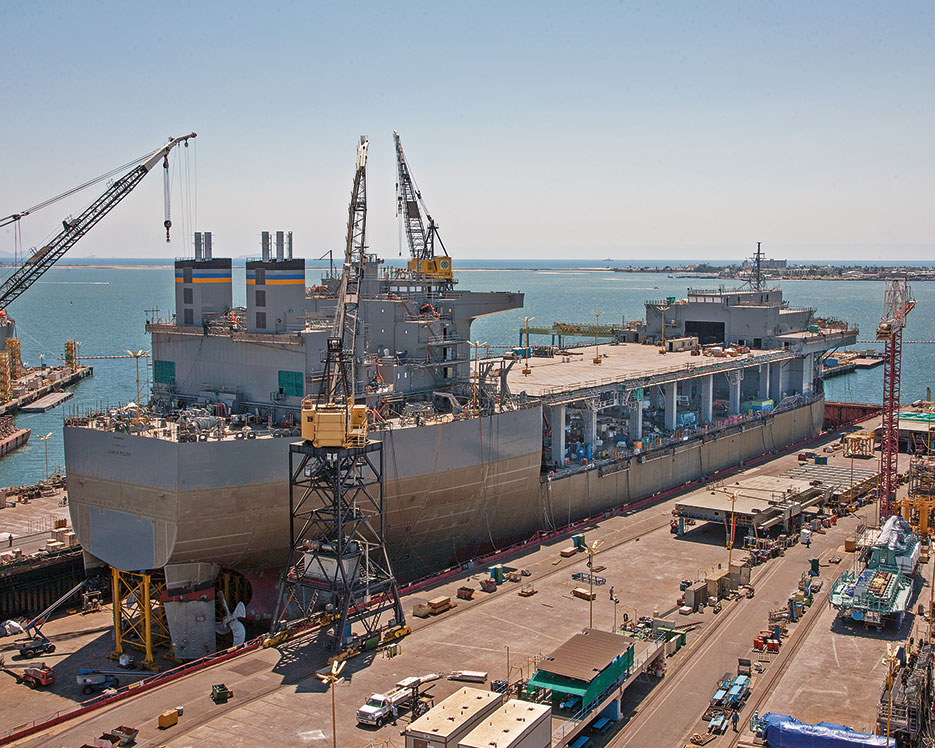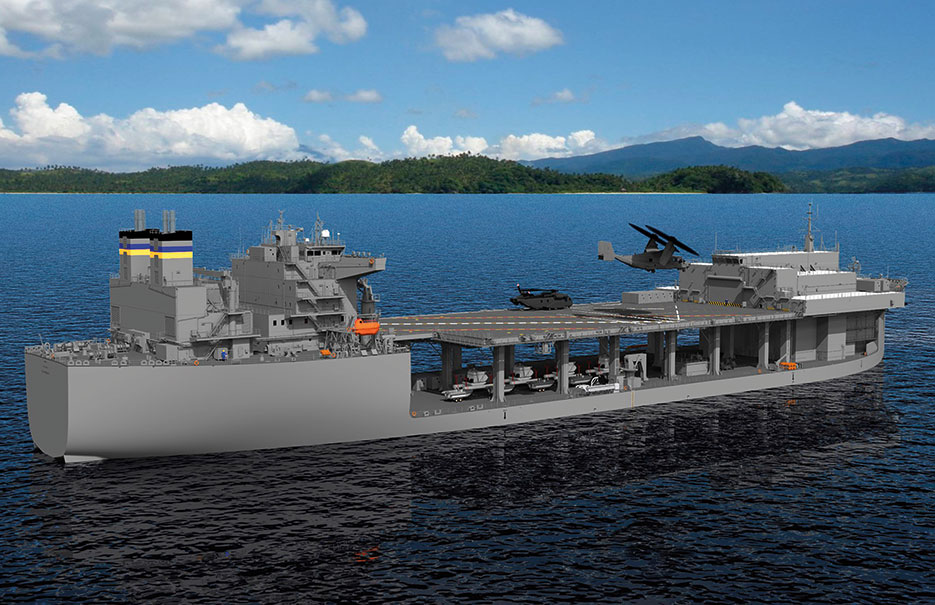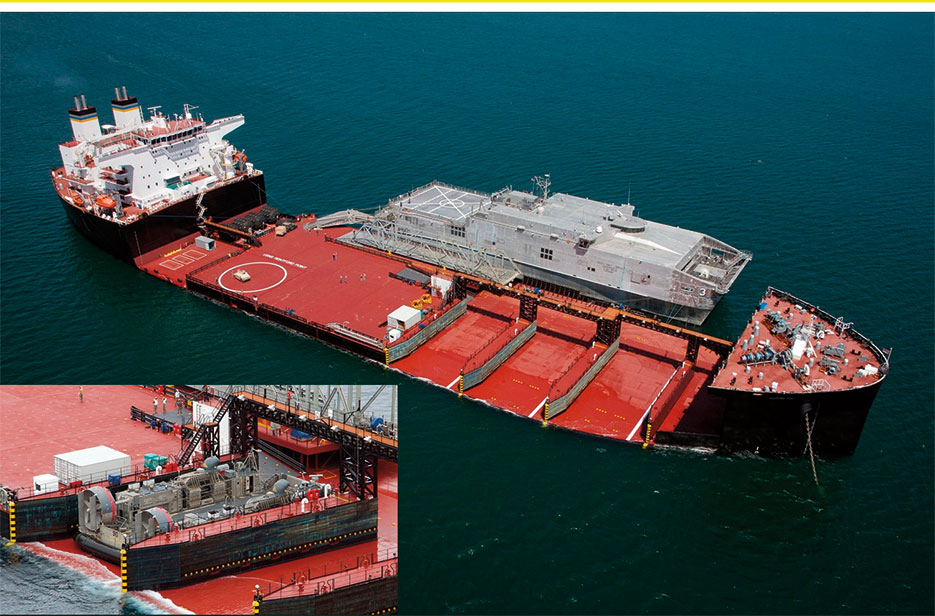This article was originally posted at India’s National Maritime Foundation. It is republished on CIMSEC with the author’s permission. Read the piece in its original form here.
By Gurpreet S. Khurana
During the ‘Raisina Dialogue’ held in March 2016 at New Delhi, Admiral Harry Harris, the Commander of United States (US) Pacific Command (USPACOM) referred to the first ever tri-lateral (Australia, Japan and India) [i] ministerial discussions held in September 2015. ADM Harris’ comments addressed “maritime security – including freedom of navigation patrols,” and proposed “expanding this tri-lateral to a quadrilateral venue” by involving the US.[ii] Later, while addressing questions, the crux of his message was that the high level of ‘inter-operability’ achieved during complex India-US Malabar exercises should not be an end into itself, but translated into “coordinated operations.”[iii] Admiral Harris’ answers suggested– albeit implicitly –that India undertake ‘coordinated freedom of navigation patrols’ in the South China Sea (SCS). Evidently, such patrols could be used to restrain China’s growing military assertiveness in the SCS, and its process of legal “norm-building” in the maritime-territorial disputes with the other littoral countries of the SCS.

India has consistently upheld the US position in terms of being a non-party to the SCS disputes by supporting dispute-resolution through well-established norms of international law and freedom of navigation in international waters, including the SCS. Nonetheless, Indian Defence Minister Mr. Manohar Parrikar lost little time in clarifying India’s position, saying that “As of now, India has never taken part in any joint patrol; we only do joint exercises. The question of joint patrol does not arise.”[iv]
The case indicates an ‘apparent’ mismatch between US expectations for India, and what New Delhi is willing to deliver to its ‘strategic partner.’ This can be contextualized and explained through analytical insight into the salient policy pronouncements from either side. The most instructive among these are those articulating India’s role as a ‘net security provider’ in Asia. This essay aims to analyse such a role to understand the ‘aberration’ in the otherwise healthy trajectory of India and the United State’s contemporary strategic relationship and in doing so, enable a better comprehension of the India’s perspective on its compelling strategic and foreign policy considerations.
America’s Articulation
The ‘net security provider’ concept emerged during the 2009 ‘Shangri La Dialogue.’ when then-US Secretary of Defence Mr. Robert Gates stated,
“When it comes to India, we have seen a watershed in our relations – cooperation that would have been unthinkable in the recent past… In coming years, we look to India to be a partner and net provider of security in the Indian Ocean and beyond.”[v]
This sentiment of the USA was thereafter reiterated on various occasions – both formally and otherwise – including in the 2010 US ‘Quadrennial Defense Review’ (QDR). The statement in QDR-10 predicted,
“India’s military capabilities are rapidly improving through increased defense acquisitions, and they now include long-range maritime surveillance, maritime interdiction and patrolling, air interdiction, and strategic airlift. India has already established its worldwide military influence through counterpiracy, peacekeeping, humanitarian assistance, and disaster relief efforts. As its military capabilities grow, India will contribute to Asia as a net provider of security in the Indian Ocean and beyond.”[vi]
India’s Articulation
India’s political leadership and policymakers clearly supported the proposed role for India in principle. Addressing the top brass of the Indian Navy and Defence Ministry in 2011, then-Indian Defence Minster Mr. AK Antony emphatically assured India’s maritime neighbours of “unstinted support for their security and economic prosperity.” He continued to say that the Indian Navy has been:
“mandated to be a net security provider to island nations in the Indian Ocean Region… most of the major international shipping lanes are located along our island territories. This bestows on us the ability to be a potent and stabilising force in the region.”[vii]
More recently, in 2013, the then-Prime Minister of India, Dr. Manmohan Singh said,
“We have…sought to assume our responsibility for stability in the Indian Ocean Region. We are well positioned… to become a net provider of security in our immediate region and beyond.”[viii]
These seminal articulations represent a valuable starting point in analyzing India’s projected role as a ‘Net Security Provider.’ This is divided into three parts for the sake of objectivity, with each one analyzing a specific facet of India’s broader national-strategic imperative to fulfill such a role. These aspects are Geographical Area, Capacity and Capability, and Cultural Ethos.
Geographical Area
Primary Area of Interest
By virtue of its geographic location and peninsular disposition, India’s most critical national interests are closely connected with events in the Indian Ocean. This is broadly so for the northern Indian Ocean, and more specifically for regions categorized as ‘primary areas of maritime interest’ in the Indian Maritime-Security Strategy, 2015 (IMSS-15). [ix]
In nearly all articulations of India’s role as a ‘net security provider’ – both Indian and American – the ‘Indian Ocean” is a ‘common thread’ while the phrase “…and beyond” has never been specifically defined. Arguably, the latter phrase would refer more accurately to the Persian Gulf or Red Sea as India’s ‘primary areas of maritime interest,’ rather than the SCS that – notwithstanding India’s increasing economic and strategic stakes there – is a ‘secondary area of maritime interest.’ (Such classification does not, however, undermine the criticality of the SCS to India’s vital interests). In this context, India’s Professor Mahapatra aptly inquires:
“If India and the U.S. have not contemplated similar kinds of patrol in Indian Ocean, what could justify India and U.S. patrolling waters of South China Sea?”[x]
Geo-Strategic Frontiers
A related, though distinct, definition of ‘Geo-Strategic Frontiers’ is also relevant here. As part of a country’s military-strategic calculus, this phrase refers to geographical boundaries necessary for that country to achieve ‘strategic depth’ against a potential State adversary. Recent American analyses, such as the one by Professor James Holmes on ‘Get Ready, India: China’s Navy is Pushing West’[xi] (towards the Indian Ocean), are indeed instructive for India, and add to trends that were noted in India nearly a decade ago.[xii] However, it is unlikely that India would need to extend its strategic depth vis-à-vis China eastwards beyond the Southeast Asian straits. Notably, these maritime choke-points constitute a major strategic challenge for the PLA Navy itself.
The ‘Geo-Strategic Frontiers’ of a country are also contingent upon the ‘capacity’ and ‘capability’ of its own and friendly military forces to influence events in the area within the said frontiers. This aspect is addressed below.
Capacity and Capability[xiii]
In 2012, the IDSA undertook a study on Out of Area Contingency (OOAC) missions by Indian armed forces. The study deduced that:
“the reach of current air and sealift capabilities means that, realistically speaking, India can conduct OOAC operations only within the Indian Ocean region (IOR).”[xiv]
Even while India’s strategic sealift and airlift capacities are being augmented, the finding of the aforesaid study is likely to remain valid for the foreseeable future. The same is true for India’s capability in other forms of maritime power projection.
The new Indian Maritime Security Strategy (IMSS-15) aptly emphasizes the term ‘net security’, rather than ‘net provider [of security].’ Further, it pegs India’s role as a ‘net security’ provider to the question of ‘capability.’ Accordingly, it defines the term ‘net security’ as:
“a state of actual security available in an area, upon balancing prevailing threats, inherent risks and rising challenges in a maritime environment, against the ability to monitor, contain and counter all of these.”[xv]
The analysis of IMMS-15 clearly indicates that the Indian Navy seeks to contribute to maritime security and stability in its primary and secondary areas of interest, broadly constituting the entire swath of the Indo-Pacific region. To do so, India is not only developing its own capabilities for distant operations, but also providing ‘capacity building’ and ‘capability enhancement’ assistance to friendly countries in the region. However, since the November 2008 seaborne terrorist attacks against Mumbai, the sub-conventional threats to India’s coastal and offshore security will continue to pose major challenges for the Navy. These challenges will require it to deftly balance its force expansion and modernization between the two competing imperatives of ‘blue water’ and ‘brown water’ operations.[xvi]
Cultural Ethos
As stated above, IMSS-15 dwells upon India’s regional role as a “provider of net security” rather than a ‘net provider of security.’ Ostensibly, an additional aim is to dispel any notion that India seeks to act as a hegemonic power or a ‘policeman’ in the region. Such intent flows from India’s cultural ethos and is closely linked to its evolution as a modern nation-state.
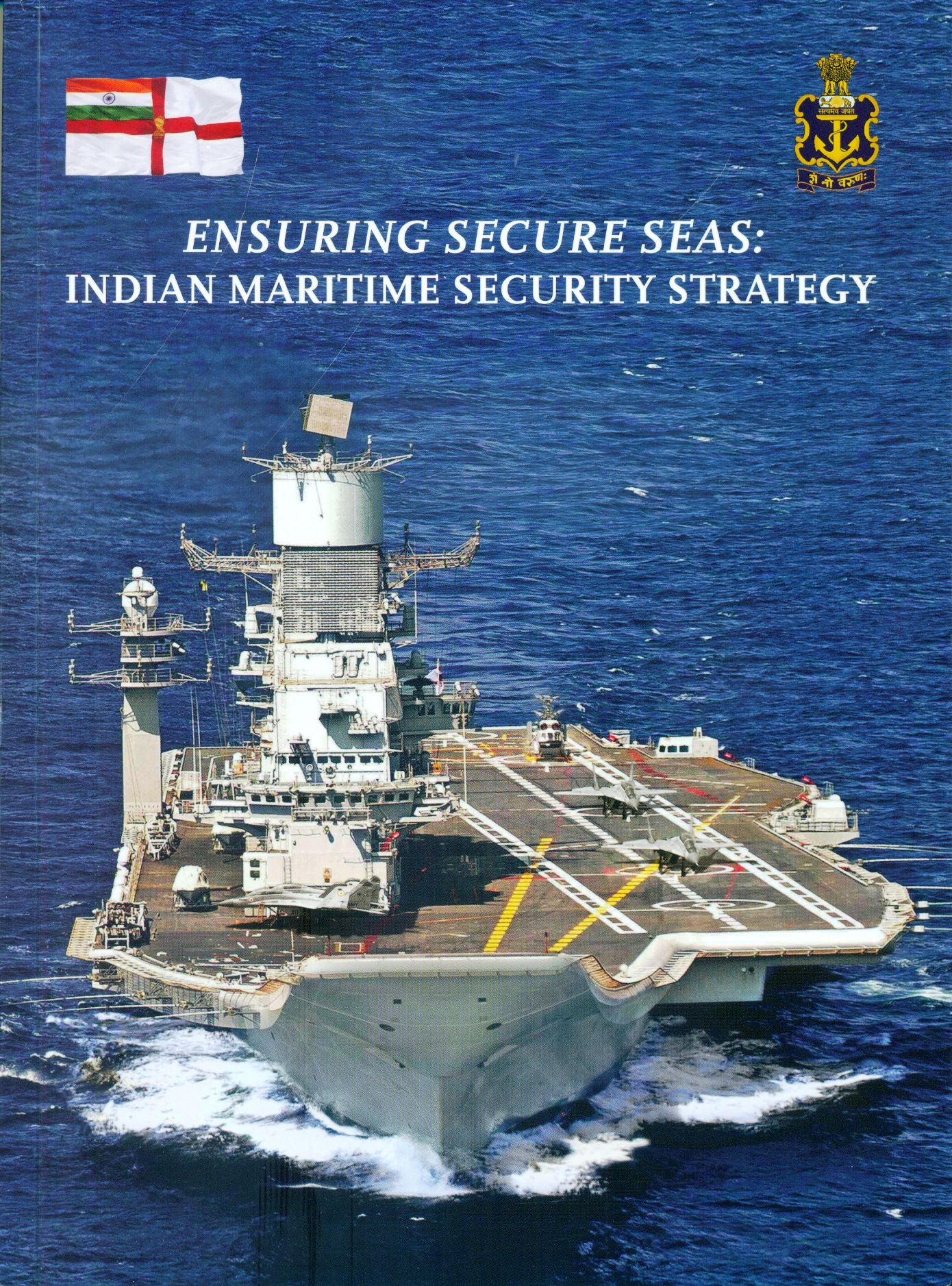
Another facet of cultural ethos is the pride with which Indians identify themselves based on their civilizational genesis, something more profound and deep-seated than the concept of ‘nationalism’. Together with the aforementioned non-hegemonic stance, this facet manifests in India’s long-standing policy of not involving itself in coalition military operations, except those mandated by the United Nations. This policy also manifests in the operational domain. Unless operating under the UN flag, Indian military forces are averse to undertaking ‘joint’ (or “combined”) operations, like joint patrols, since such operations would involve placing Indian forces under foreign Command and Control (C2). The Indian Defence Minister’s negation of the possibility of ‘joint (naval) patrols’ may be seen in this context.
Other conditions notwithstanding, the statement by ADM Harris at the Raisina Dialogue deserves more attention than it has received. He proposed turning India-US “joint (naval) exercises” into “coordinated (naval) operations.” His preference for the term ‘coordinated’ rather than ‘joint’ is noteworthy. While in common English parlance, the two terms may be considered synonymous, the difference is significant in ‘operational’ terms. Whereas a ‘joint’ operation involves a unified C2 of military forces, a ‘coordinated’ operation permits the forces to maintain their respective national C2 structures. In the past, the Indian Navy has indeed undertaken ‘coordinated’ operations with the US Navy on various occasions. The examples include the 2002 escort missions for US high-value ships in the Malacca Straits and the 2004-05 Humanitarian Assistance and Disaster Relief (HADR) mission in the aftermath the Indian Ocean Tsunami. Even during more recent anti-piracy missions to escort merchant vessels in the Gulf of Aden, the Indian Navy coordinated its operations with the US-led coalition naval forces, as well as other navies deployed for the same mission. The notable commonality among these operations, however, was that these were all conducted in the Indian Ocean or its contiguous straits.
Concluding Remarks
The subtext of the US-India Joint Statement of January 2015 on “our diversified bilateral strategic partnership”[xvii] clearly indicates our broader strategic convergence, and the fact that India needs the strategic partnership of America as much as the other way around. However, occasional dissonance in the bilateral relationship cannot be ignored. Notwithstanding the diplomatic ‘refrain’ as a natural occurrence between two major democracies, the dissonance cannot be slighted, particularly in the light of the emerging regional security environment. Also, the discord may not lie in Indian’s longstanding foreign policy tenet of ‘Strategic Autonomy’ (or ‘Non-Alignment 2.0’), as is usually touted. As with other facets of the bilateral relationship, the occasional discord mostly manifests at the functional level. In context of India-US military strategic cooperation in the Indo-Pacific region, the aberrations at this level could be addressed by bridging national policymaking with strategy formulation of the military forces.
Given America’s ‘overstretched’ maritime-military resources and its increasing contribution to capability and capacity in the Indian Navy over the years, a US expectation for India to provide for regional security and stability in the maritime-centric Indo-Pacific region is not misplaced. At the operational level too, the US expectation for India to convert ‘joint’ naval exercises into ‘coordinated’ operations may be justifiable. However, it seems that India’s broader strategic imperatives in terms of the three key facets of Geographical Area, Capacity and Capability, and Cultural Ethos are not in consonance with such expectations, at least not yet.
Captain (IN) Gurpreet S Khurana, PhD is Executive Director, National Maritime Foundation (NMF), New Delhi. The views expressed are his own and do not reflect the official policy or position of the NMF, the Indian Navy, or the Government of India. He can be reached at gurpreet.bulbul@gmail.com.
[i] ‘US, India, Japan Hold First Trilateral Ministerial Dialogue, Call for Freedom of Navigation’, NDTV, 30 September 2015, at
http://www.ndtv.com/india-news/us-india-japan-hold-first-trilateral-ministerial-dialogue-call-for-freedom-of-navigation-1224830
[ii] “Let’s Be Ambitious Together”, Remarks by Admiral Harry B. Harris, Jr., Commander, U.S. Pacific Command, The Raisina Dialogue, New Delhi, India, 2 March 2016, at
http://www.pacom.mil/Media/SpeechesTestimony/tabid/6706/Article/683842/raisina-dialogue-remarks-lets-be-ambitious-together.aspx
[iii] Dinkar Pheri, ‘U.S. push for joint patrols in Indo-Pacific region’, The Hindu, 3 March 2016, at
http://www.thehindu.com/todays-paper/tp-national/us-push-for-joint-patrols-in-indopacific-region/article8306481.ece
[iv] Sushant Singh and Pranav Kulkarni, ‘Question of joint patrolling with the US does not arise: Parrikar’, The Indian Express, 5 March 2016, at
http://indianexpress.com/article/india/india-news-india/question-of-joint-patrolling-with-the-us-does-not-arise-need-to-cut-the-flab-from-the-military-parrikar/
[v] ‘America’s security role in the Asia-Pacific’, Address by Dr Robert Gates, US Secretary of Defence, Shangri-La Dialogue, 30 May 2009, at
http://www.iiss.org/en/events/shangri%20la%20dialogue/archive/shangri-la-dialogue-2009-99ea/first-plenary-session-5080/dr-robert-gates-6609
[vi] Quadrennial Defence Review (QDR) Report, US Department of Defense, February 2010, p. 60 at
http://www.defense.gov/Portals/1/features/defenseReviews/QDR/QDR_as_of_29JAN10_1600.pdf
[vii] ‘Indian Navy-Net Security Provider to Island Nations in IOR: Antony’, Press Information Bureau, Government of India (Ministry of Defence), 12 October 2011, at
http://pib.nic.in/newsite/PrintRelease.aspx?relid=76590
[viii] PM’s speech at the Foundation Stone Laying Ceremony for the Indian National Defence University at Gurgaon, Press Information Bureau, Government of India (Prime Minister’s Office), 23 May 2013, at
http://pib.nic.in/newsite/mbErel.aspx?relid=96146
[ix] ‘Ensuring Secure Seas: Indian Maritime Security Strategy’, Integrated Headquarters, Ministry of Defence (Navy), 2015, p.31-32, at http://indiannavy.nic.in/sites/default/files/Indian_Maritime_Security_Strategy_Document_25Jan16.pdf
[x] Professor Chintamani Mahapatra, Jawaharlal Nehru University (JNU), New Delhi, cited in Anjana Pasricha, ‘India Rejects Joint Naval Patrols with US in South China Sea’, Voice of America (VOA), 11 March 2016, at http://www.voanews.com/content/india-rejects-joint-naval-patrols-with-us-in-south-china-sea/3231567.html
[xi] James Holmes, ‘Get Ready, India: China’s Navy is Pushing West’, The National Interest, 8 March 2016, at http://www.nationalinterest.org/feature/look-out-india-chinas-navy-pushing-west-15426
[xii] See for instance, Gurpreet S Khurana, ‘China’s ‘String of Pearls’ in the Indian Ocean and Its Security Implications’, Strategic Analysis (IDSA), 32:1, p.1-39, at https://www.academia.edu/7727023/Chinas_String_of_Pearls_in_the_Indian_Ocean_and_Its_Security_Implications
[xiii] The ‘capacity’ of a military force refers to its wherewithal in the limited context of its hardware. ‘Capability’ refers to the ability of the force in a more comprehensive sense encompassing not only its physical capacity, but also the conceptual and human components. For details, see Gurpreet S Khurana. Porthole: Geopolitical, Strategic and Maritime Terms and Concepts (Pentagon, New Delhi: 2016), pp.30-31
[xiv] Net Security Provider: India’s Out-of-Area Contingency Operations (IDSA/ Magnum Books, October 2012), p.53
[xv] ‘Ensuring Secure Seas: Indian Maritime Security Strategy’, Integrated Headquarters, Ministry of Defence (Navy), 2015, p.80, at
http://indiannavy.nic.in/sites/default/files/Indian_Maritime_Security_Strategy_Document_25Jan16.pdf
[xvi] Gurpreet S Khurana, ‘‘Net Security Provider’ Defined: An Analysis of India’s New Maritime Strategy-2015’, National Maritime Foundation (NMF) View Point, 23 November 2015, at
http://www.maritimeindia.org/View%20Profile/635838396645834619.pdf
[xvii] ‘U.S.-India Joint Statement’, Office of the Press Secretary, The White House, 25 January 2015, at
https://www.whitehouse.gov/the-press-office/2015/01/25/us-india-joint-statement-shared-effort-progress-all
Featured Image: ADM. Harris speaking at the Raisina Dialogue in March, 2016. Photo courtesy of Embassy of the United States of America-New Delhi/Released.

